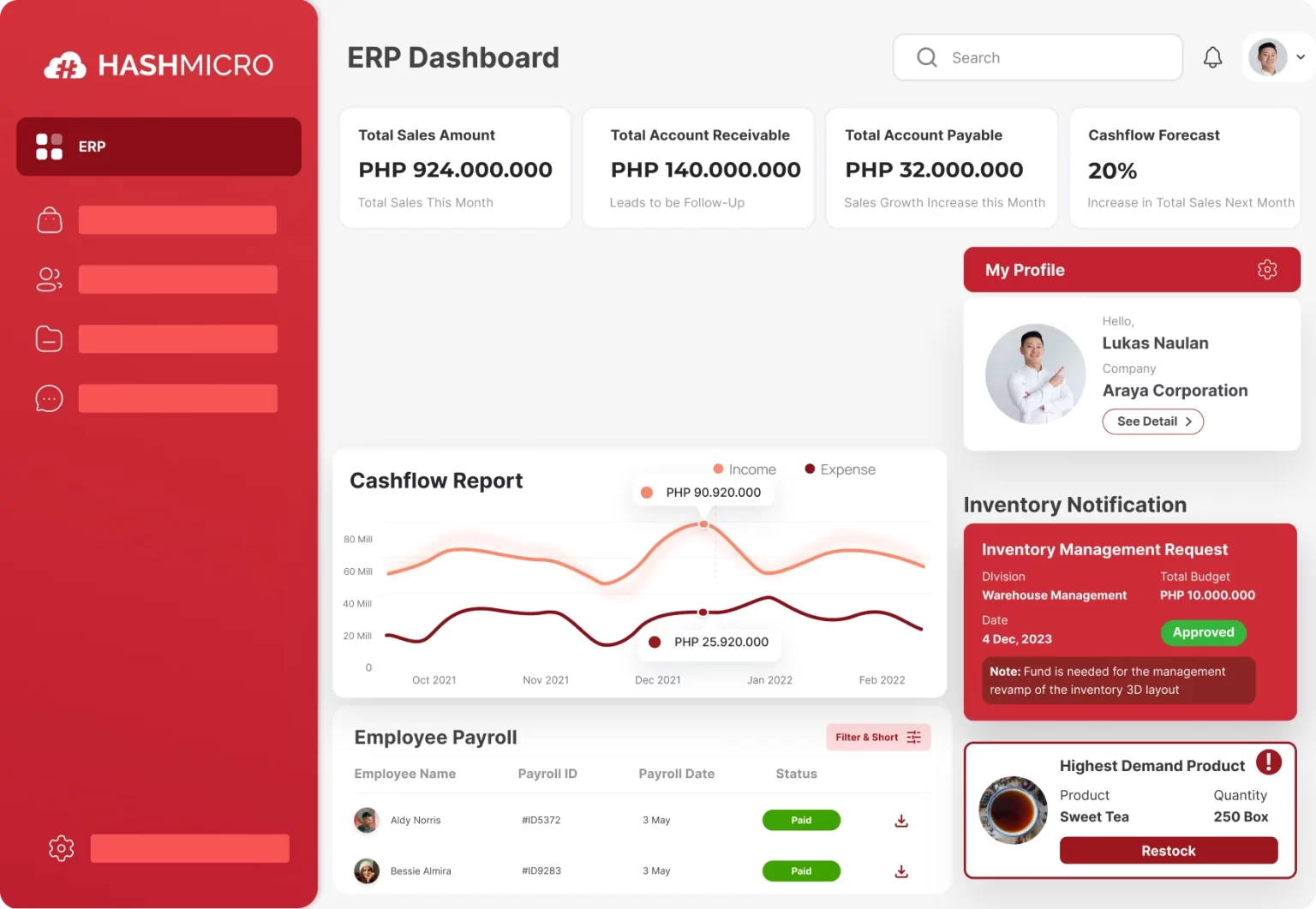Managing your company’s greenhouse gas (GHG) emissions without a structured system can lead to messy data, delayed reporting, and missed sustainability targets. In today’s regulatory landscape, this disorganisation risks financial penalties and stakeholder distrust.
The Philippines currently ranks 7th in the Climate Change Performance Index 2025, showing strong progress in energy efficiency and GHG reduction.
Yet, with over 235 million metric tonnes of CO₂e emitted in 2021—mainly from business-driven sectors like energy, transport, and industry—corporate action is crucial. That’s where GHG accounting comes in: a structured method for businesses to measure and manage emissions effectively.
This article explores the fundamentals of GHG accounting, its significance for businesses in the Philippines, and how leveraging advanced tools like HashMicro’s ERP system maaari mag-streamline emissions pagsubaybay at pag-uulat.
What is GHG Accounting?
Greenhouse gas (GHG) accounting is the process of measuring and tracking emissions from business activities. It helps companies understand their environmental impact by calculating carbon dioxide and other GHG emissions. This practice is essential for sustainability reporting and ESG strategies.
GHG accounting categorizes emissions into direct and indirect categories, utilizing global standards such as the GHG Protocol. It provides the data needed to create reduction plans, comply with regulations, and improve climate-related disclosures. Companies use GHG accounting tools to monitor progress and support ESG framework goals.
Key Takeaways
|
Table of Contents
What is the Purpose of GHG Accounting?
GHG accounting serves multiple critical roles in helping businesses navigate environmental responsibilities and make informed decisions. Below are the key purposes of conducting greenhouse gas accounting:
1. Measure environmental impact
It allows businesses to assess how their operations contribute to climate change. Accurate tracking of emissions sets the foundation for sustainability efforts. It helps identify high-emission areas that require immediate attention.
2. Support ESG frameworks
GHG data is a key component in Environmental, Social, and Governance (ESG) reporting. It improves transparency for investors, regulators, and the public. Reliable emissions reporting strengthens ESG credibility and compliance.
3. Ensure regulatory compliance
Many countries and regions now mandate emissions reporting from businesses. GHG accounting ensures alignment with existing laws and environmental standards. It also equips companies to adapt quickly to evolving climate-related regulations.
4. Guide strategic planning
Emissions insights can shape sustainability strategies and carbon reduction goals. GHG accounting informs business decisions that align with climate targets. It allows leaders to prioritise investments in green technologies.
5. Improve operational efficiency
By identifying inefficiencies in energy or logistics, companies can cut emissions and costs. GHG tracking highlights wasteful processes in daily operations. This leads to more sustainable practices and long-term savings.
Still unsure whether a GHG accounting system is the right fit for your business? No worries! Try a pricing scheme today and consult with our experts to explore how this solution can streamline your emissions reporting and support your ESG goals. Click the banner below to get started!
How Does GHG Accounting Work?
GHG accounting involves a step-by-step framework that allows organisations to consistently measure, manage, and report their greenhouse gas emissions. This method supports transparency and accuracy, particularly when aligned with globally recognised standards such as the GHG Protocol. Below are the core steps involved:
1. Set Boundaries
Begin by defining the operational and organisational boundaries of your GHG inventory. This includes determining whether to account for emissions based on control (financial or operational) or equity share. Boundaries also clarify which emission scopes (Scope 1, 2, and/or 3) to include in reporting.
2. Collect Data
Gather relevant activity data from various emission sources. This may include fuel usage in company vehicles, electricity consumption in offices, employee commuting, purchased goods, and more. The accuracy of this data is critical, as it forms the basis of your emissions calculations.
3. Calculate Emissions
Use GHG accounting tools and apply standard emissions factors to convert activity data into carbon dioxide equivalents (CO₂e). This step often involves software or calculators that follow the GHG Protocol or national guidelines to ensure consistency and comparability.
4. Verify & Report
After calculations, it’s recommended to have the results verified through internal review or third-party audits. This enhances credibility and ensures compliance with regulatory frameworks or ESG standards. Finally, the findings are compiled into a GHG accounting report, ready for stakeholders, regulatory bodies, or sustainability disclosures.
Difference Between Greenhouse Gas Accounting and Carbon Assessment
At first glance, greenhouse gas (GHG) accounting and carbon assessment may seem interchangeable, but they serve different scopes and purposes. Understanding this difference is essential for businesses aiming to improve their environmental reporting and ESG performance.
GHG Accounting is the process of measuring and reporting all major greenhouse gases—like CO₂, CH₄, N₂O, and fluorinated gases—emitted by a business. It adheres to global standards, including the GHG Protocol, which supports comprehensive ESG reporting and climate compliance.
Carbon Assessment, on the other hand, focuses specifically on CO₂ emissions, usually as part of a carbon footprint evaluation. It provides a narrower view of climate impact, commonly used for quick assessments, product-level emissions, or internal benchmarking. While it’s helpful for smaller initiatives or consumer-facing campaigns, it does not capture the full environmental impact as thoroughly as GHG accounting.
In short, GHG accounting provides a more comprehensive and standardised approach for businesses committed to sustainability and compliance. It supports broader climate strategies, reporting under the ESG framework, and long-term emissions reduction goals. Carbon assessment, though simpler, may fall short for organisations seeking detailed environmental performance tracking or official certification.
Why is Greenhouse Gas Accounting Important?

By understanding and reporting emissions, businesses can unlock multiple strategic benefits. Here’s why GHG accounting matters:
1. Meet environmental regulations and industry standards
GHG accounting allows companies to comply with local and international emission disclosure requirements. This includes alignment with frameworks like the GHG Protocol and regulatory schemes that may become mandatory. For export-driven businesses, this compliance ensures smooth access to global markets.
2. Gain investor trust by aligning with ESG goals
Transparent GHG reporting supports Environmental, Social, and Governance (ESG) strategies, making the company more attractive to investors. Many institutional investors now assess climate risk disclosures before making funding decisions, so robust accounting practices can improve funding opportunities.
3. Identify cost-saving opportunities in energy and resource use
Tracking emissions often reveals inefficiencies in operations, such as excessive energy consumption or logistics-related waste. Addressing these areas can reduce operational costs and improve overall sustainability performance.
4. Prepare for carbon pricing and climate-related financial risks
With carbon taxes and emission trading schemes on the rise, GHG accounting helps businesses anticipate future expenses. It also supports risk mitigation by providing visibility into how emissions-related regulations could impact profit margins.
5. Respond to market demands and global trade expectations
In the Philippines, businesses—especially those in the export and manufacturing sectors—face increasing pressure from global partners to demonstrate environmental responsibility. GHG reporting helps meet supply chain expectations and enhances reputation on the global stage.
How Does GHG Accounting Organise the Different Categories of Emissions?
Greenhouse gas (GHG) accounting uses a structured approach to categorise emissions based on their source and the level of control a company has over them. This classification, outlined by the GHG Protocol, enables businesses to systematically measure and report their emissions while helping identify where mitigation efforts are most effective.
Scope 1: direct emissions from owned or controlled sources
These are emissions that come directly from assets the company owns or controls.
Example:
If your company owns delivery trucks that burn diesel or runs a gas-powered stove in a restaurant kitchen, the CO₂ released is counted under Scope 1. It also includes fuel used in generators at company-owned facilities.
Scope 2: indirect emissions from purchased energy
These emissions are from the electricity, heating, or cooling your business buys and uses.
Example:
If your office is powered by electricity from a coal-fired power plant, the resulting emissions, though not produced by your business, are counted in Scope 2. The same goes for using district heating or centralized air conditioning in a leased building.
Scope 3: indirect emissions from the value chain
Scope 3 covers all other emissions that happen outside your business operations but are influenced by your activities.
Example:
This includes emissions from suppliers making your products, shipping goods to customers, employees commuting, business flights, or waste sent to landfills. If you sell coffee, emissions from growing the beans and delivering cups to your café are Scope 3.
Are GHG Accounting and Corporate Emissions Disclosures Mandatory?
GHG accounting and corporate emissions disclosures are increasingly becoming mandatory across global markets. Governments, regulators, and investors are demanding greater transparency to ensure that businesses are actively addressing their environmental impact and aligning with climate-related goals.
For example, the U.S. Securities and Exchange Commission (SEC) has proposed rules requiring public companies to disclose their Scope 1, Scope 2, and in some cases, Scope 3 emissions, as part of their financial reporting.
In the Philippines, while GHG disclosure is not yet mandatory for all businesses, growing pressure is evident. Large enterprises and export-oriented firms are especially expected to align with global ESG frameworks. The SEC also promotes sustainability reporting through the ASEAN framework.
Participation in global supply chains increasingly demands transparent climate data. As ESG investment expands, companies using GHG accounting gain a competitive edge. They reduce compliance risks and open doors to sustainable finance opportunities.
What’s Next for Corporate GHG Accounting?
As climate regulations tighten and ESG expectations rise, the future of corporate GHG accounting is heading toward greater precision, transparency, and digital integration. Key developments shaping the future of GHG accounting include:
- Integration with AI-powered ESG software: Companies are adopting AI tools that automate emissions tracking, flag anomalies, and generate real-time insights. These systems reduce manual errors and enhance reporting accuracy.
- Real-time data tracking using GHG accounting tools: Emerging platforms enable companies to monitor emissions across facilities, fleets, and suppliers in real-time, facilitating proactive mitigation and operational efficiency.
- Standardized GHG accounting reports for corporate disclosures: As global regulations harmonise, businesses will need to generate audit-ready reports that comply with standards like the GHG Protocol, IFRS Sustainability Disclosure Standards, or CSRD.
- Increased focus on Scope 3 emissions due to investor demand: Investors and regulators are pushing for greater transparency in indirect emissions, especially across supply chains. Addressing Scope 3 will become essential for credible ESG reporting.
Automating Emissions Data Collection with HashMicro ERP System

Manual GHG data tracking often leads to inconsistencies, delays, and compliance risks. As environmental regulations tighten and ESG reporting becomes a global standard, businesses need a reliable system that ensures accuracy, speed, and transparency.
HashMicro ERP offers an integrated GHG accounting solution built to help organisations collect, calculate, and report emissions data in real time. As the first ERP in Southeast Asia with ESG integration, it enables cross-departmental visibility across inventory, supply chain, operations, and finance, supporting organisations to meet sustainability goals more efficiently.
With automated reporting and centralised dashboards, companies can easily generate GHG reports aligned with the GHG Protocol and other ESG frameworks. Whether you’re tracking Scope 1, 2, or 3 emissions, HashMicro provides the tools you need for smarter environmental decision-making.
Here are the features offered by HashMicro’s ERP system:
- Real-Time Data Integration: This feature enables the integration of data from various departments such as production, logistics, and procurement in one platform. With centralised and real-time data flow, companies can easily access information on activities that contribute to greenhouse gas emissions.
- Automated Reporting & Dashboard: HashMicro provides interactive dashboards and automated reports that accurately display emissions and energy consumption data. This feature supports the creation of sustainability reports and GHG accounting according to standards such as GHG Protocol, ESG reporting, and ESG Score.
- Supply Chain Monitoring: This feature enables tracking of emissions from supply chain activities, including transportation and raw material procurement. With detailed supply chain monitoring, companies can identify Scope 3 emissions and design reduction strategies.
- Asset & Energy Usage Tracking: Through the asset and facility management module, the system records energy consumption as well as heavy equipment or vehicle usage. This data is important for measuring direct emissions (Scope 1) and analysing potential energy efficiency in daily operations.
- ESG Integration Module: As one of the ERPs that supports ESG integration, HashMicro makes it easier for companies to align GHG accounting with sustainability targets. This feature helps companies in sustainability reporting that is more comprehensive and trustworthy to stakeholders.
Conclusion
GHG accounting is more than just calculating emissions—it’s a critical foundation for long-term business sustainability, risk management, and ESG alignment. By understanding its purpose and applying it correctly, companies can reduce their environmental impact while meeting global compliance standards.
As an efficient and integrated solution, implementing HashMicro’s ERP system is the right choice to support automated and accurate emissions management. With features that support real-time reporting and ESG integration, HashMicro helps companies build greener, more transparent, and competitive operations for the future.
To start a more well-managed sustainability journey, schedule a free demo now and discover paano makakatulong ang sistema ng ERP ng HashMicro sa iyong negosyo na mahusay na pamahalaan ang GHG accounting.
Question About GHG Accounting
-
What are the 5 principles of GHG accounting?
The five key principles of GHG (Greenhouse Gas) accounting, as outlined in the GHG Protocol, are:
1. Relevance: Ensure the GHG inventory appropriately reflects the emissions of the organization and serves the decision-making needs of users.
2. Completeness: Account for all emission sources within the chosen inventory boundary. Any exclusions must be disclosed and justified.
3. Consistency: Use consistent methodologies to allow for meaningful comparison of emissions over time. Any changes in data, methods, or boundaries should be clearly explained.
4. Transparency: Disclose all relevant assumptions, methods, and data sources clearly and openly, enabling verification.
5. Accuracy: Reduce uncertainties as much as possible and avoid systematic over- or under-estimation of emissions. -
How to calculate GHG accounting?
GHG emissions are typically calculated using this basic formula:
– Emissions = Activity Data × Emission Factor
Activity Data: The measurable amount of activity that results in GHG emissions (e.g., liters of fuel consumed, kWh of electricity used).
– Emission Factor: A coefficient that quantifies emissions per unit of activity, typically sourced from established databases (like IPCC or local government sources).
Steps:
– Define organizational and operational boundaries (Scope 1, 2, and 3).
– Collect activity data (e.g., fuel usage, electricity consumption, transport miles).
– Apply appropriate emission factors.
– Aggregate and report the emissions by scope and category.
– Validate and verify data to ensure accuracy. -
What do GHG stand for?
GHG stands for Greenhouse Gases.
These are gases in the Earth’s atmosphere that trap heat and contribute to the greenhouse effect, leading to global warming. The main GHGs include:
– Carbon dioxide (CO₂)
– Methane (CH₄)
– Nitrous oxide (N₂O)
– Fluorinated gases (like HFCs, PFCs, SF₆) -
What is GHG accounting job description?
A GHG Accountant or Carbon Accounting Specialist is responsible for measuring, tracking, and reporting an organization’s greenhouse gas emissions. Typical job responsibilities include:
– Collecting and analyzing data related to energy use, transportation, waste, and supply chains.
– Applying GHG Protocol standards or ISO 14064 to prepare emissions inventories.
– Identifying carbon reduction opportunities and supporting ESG reporting.
– Collaborating with sustainability teams and ensuring regulatory compliance.
– Using GHG accounting software tools to manage data and generate reports.







































